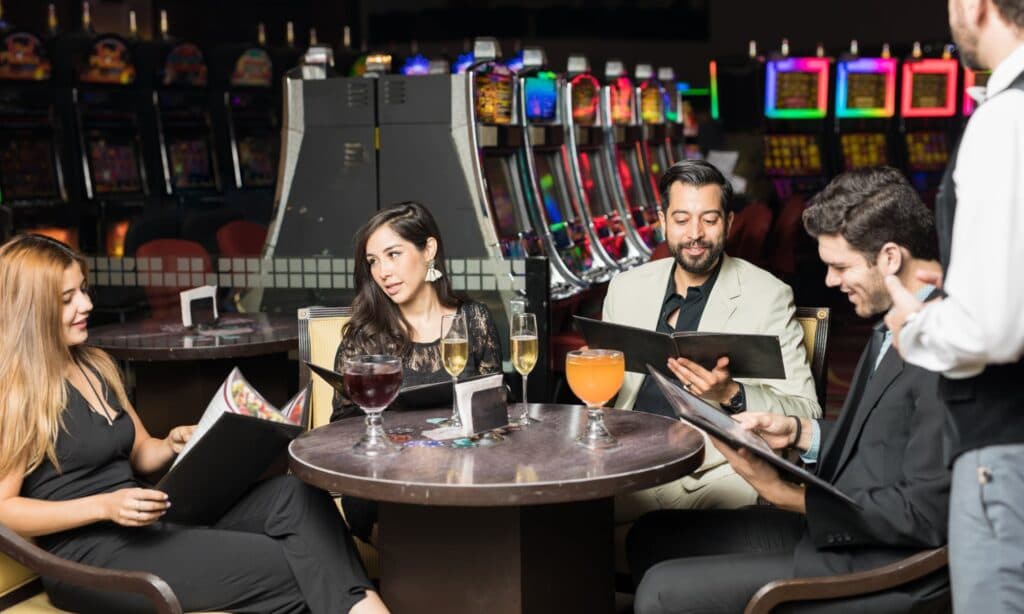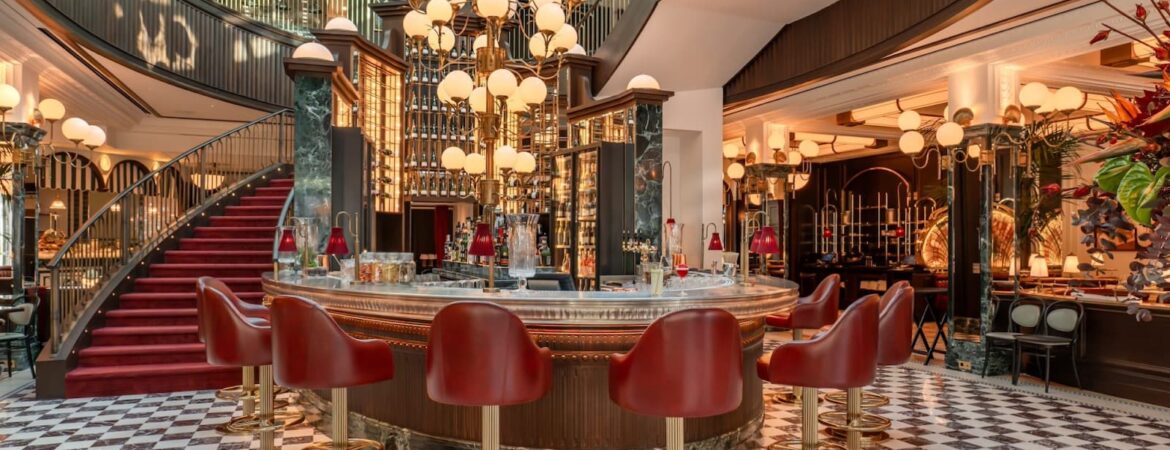For years, casinos were known more for flashing lights and all-you-can-eat buffets than refined food experiences. This included everything from glitzy resorts in Las Vegas to non Gamstop casinos across Europe, where dining once played a secondary role. But that perception is quickly changing. Across the UK, Europe, the US and beyond, casinos are transforming into serious culinary destinations. Fine dining is no longer a luxury found only in standalone restaurants; it’s now a growing part of the casino experience.
A New Era of Casino Dining
The evolution of casino culture has created a new standard for what these venues offer beyond gaming. Today’s casinos are multi-sensory entertainment hubs, combining theatre, nightlife, spa experiences, and increasingly, elevated dining. Food is no longer a supporting act — it’s a headline feature.
In an industry where first impressions count and loyalty is everything, casinos are using culinary excellence as a competitive edge. Guests might come for the games, but the goal is to keep them on site longer — and memorable meals are key to achieving that. Dining becomes a destination within the destination, creating reasons to return that go far beyond the slot machines.
This new era of casino dining is also about identity. Instead of generic menus, restaurants now reflect the brand, the location, and the clientele. A casino in Macau might offer a modern Cantonese tasting experience; one in London could serve heritage British dishes with a twist. Casinos are curating dining to reflect local pride and global ambition.
From Buffets to Chef-Curated Menus
In the past, casino dining was about volume and speed. Buffets offered sheer abundance — roast stations, dessert towers, carving knives and steam trays — designed to feed thousands daily. While still popular in some locations, the buffet is no longer the heart of the dining experience.
Today’s guests expect more than just access to food; they want quality, origin, and craftsmanship. Casino operators have responded with purposefully designed restaurants led by professional chefs. These venues are no longer tucked away — they’re central, visible, and actively marketed as attractions.
Menus now emphasise detail. You’ll find dry-aged steaks, freshly shucked oysters, house-made pastas, and seasonal sides that reflect what’s fresh and local. Vegan options aren’t an afterthought — they’re integrated. Wine lists are curated by sommeliers. There’s even increasing demand for mixology-forward cocktail menus that rival the best city bars.
Guests can reserve tables just as they would at top urban restaurants, with many casino venues now appearing in food guides and receiving critical acclaim. The result is a major image shift: casinos are no longer food last — they’re food first.
Spotlight: Casino de Monte-Carlo, Monaco
The Casino de Monte-Carlo stands as one of the finest examples of how history, glamour, and gastronomy can coexist in one iconic location. Situated in the heart of Monaco, this legendary casino is not only famous for its Belle Époque architecture and elite clientele, but also for its exceptional dining experiences.
Inside its walls is Le Train Bleu, a restaurant that pays homage to the golden age of European rail travel. With its ornate ceilings, crystal chandeliers, and classic French service, it creates an atmosphere of timeless sophistication. The menu features rich classics like beef Rossini, scallops in champagne sauce, and cheese trolleys curated by top affineurs. It’s more than a meal — it’s a step back into luxury.
Right next door, Café de Paris Monte-Carlo is a more lively and modern counterpart, overlooking the famed Place du Casino. The brasserie serves elegant takes on French bistro staples, from duck confit and sole meunière to local Provençal favourites. Its grand terrace is a place to see and be seen, with a glass of champagne in hand and dishes arriving with flair.

Together, these restaurants show that in Monte Carlo, dining isn’t just a casino amenity — it’s part of the allure. The food, like the setting, tells a story of class, refinement, and high stakes. And for visitors who never place a bet, the meal alone is worth the journey.
Celebrity Chefs Redefining the Casino Kitchen
Big names are entering the casino kitchen. Gordon Ramsay has opened multiple restaurants across Las Vegas casinos, from Gordon Ramsay Hell’s Kitchen at Caesars Palace to his Fish & Chips spot on the Strip. Each venue mirrors the chef’s personal flair while meeting the expectations of a high-end audience.
Similarly, Nobu Matsuhisa has expanded his culinary empire into casinos, combining Japanese tradition with Peruvian influence. The Nobu restaurants inside Caesars and Resorts World are known for dishes like miso black cod, yellowtail jalapeño, and perfectly crafted sushi.
These partnerships are more than just brand names — they bring actual culinary standards, trained staff, and curated menus to the table.
UK Casinos Joining the Culinary Conversation
The UK’s casino scene has also seen a shift. Places like The Hippodrome Casino in London are now as much about the food as the roulette. Its Héliot Steak House, tucked inside the grand building, is known for USDA prime beef, lobster tail, and fine wines — earning praise from food critics and casino-goers alike.
Aspers Casino in Stratford features Clary’s Restaurant, which offers modern British cuisine with an international twist. From grilled lamb rump to roasted cod with saffron potatoes, the menu caters to both casual diners and those out for a special evening.
The Rise of Themed Dining Concepts in Casinos
Beyond gourmet dining, casinos are embracing immersive themed restaurants. These include speakeasy-style cocktail lounges hidden behind secret doors, retro-American diners with neon lights and jukeboxes, and East Asian tea houses with low lighting and handcrafted ceramics. The goal is not just to serve food, but to transport diners into another world.
Each concept plays a role in storytelling. Guests might enjoy Southern barbecue in a Wild West saloon-style room or have tapas served by staff in 1920s attire. These theatrical details create Instagram-worthy moments and add emotional value to the meal — turning dinner into entertainment.
Sustainability and Local Ingredients on the Gaming Floor
As public interest in food sustainability grows, casinos are making meaningful changes. Many have adopted farm-to-table approaches, forming partnerships with regional suppliers to highlight local ingredients and seasonal produce. This not only improves food quality, but also supports local economies.
In eco-conscious destinations like the Scottish Highlands, casino restaurants are even showcasing wild venison, hand-dived scallops, or organic vegetables grown nearby. Sustainability is also reflected in menus that reduce food waste, use biodegradable packaging, or focus on low-impact proteins.
These efforts are helping casinos shift their image from indulgent to intentional — balancing luxury with responsibility in ways that resonate with today’s diners.
Food as a Key Part of the Entertainment Mix
Casino resorts today compete with theatres, hotels, and event venues. The goal is to create a full experience. This is why many casino dining areas are designed with visual drama — open kitchens, dark wood interiors, candlelit booths, and cocktail bars with theatrical bartending.
Live music, DJs, and weekend brunches are also integrated into the dining schedule. Some venues even offer chef’s tables, wine tasting nights, or food-focused events that draw a crowd regardless of the gambling floor.
More Than a Meal: A Culinary Experience
What sets casino dining apart is its combination of exclusivity, variety, and atmosphere. It’s not unusual to find a single venue with five or more distinct restaurants, ranging from casual street food counters to premium private dining lounges.
This variety is appealing to groups, couples, and tourists alike. Guests can enjoy an aperitif at a tapas bar, dine at a steakhouse, and finish with dessert at a gelato stand—all without leaving the building.
Conclusion: A New Standard for Dining in Entertainment Spaces
Casinos have become more than places to gamble. They’ve become spaces where food, design, and experience collide. As people continue to seek multi-sensory, high-quality outings, gourmet casino dining will only grow in relevance.
Today, it’s not unusual for someone to book a casino visit based on what’s being served in the restaurant, not who’s dealing the cards. The gamble, it seems, starts with the menu — and more often than not, it pays off.
